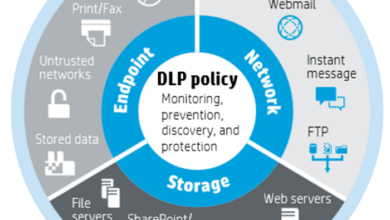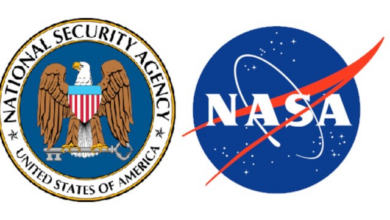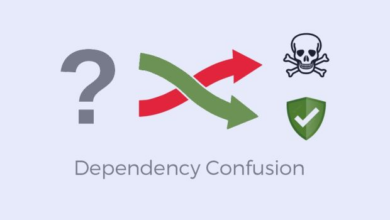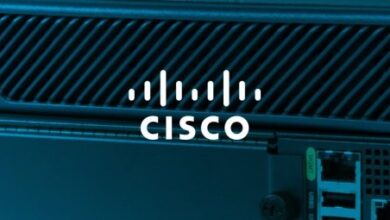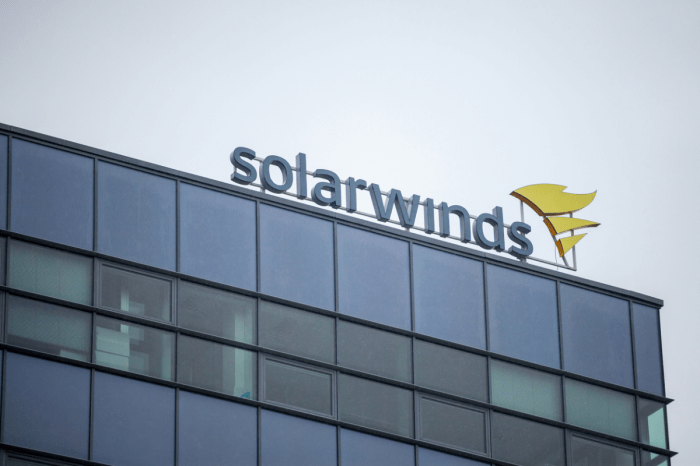
SEC Charges SolarWinds with Fraud: A Cyberattacks Aftermath
Sec solarwinds charge fraud – SEC Charges SolarWinds with Fraud: A Cyberattack’s Aftermath – The story of the SolarWinds hack is one of the most significant cybersecurity incidents in recent history. It began with a seemingly innocuous software update, but quickly spiraled into a global crisis, exposing vulnerabilities in critical infrastructure and shaking the foundations of trust in the digital world.
The attack, which involved the insertion of malicious code into SolarWinds’ Orion software, allowed attackers to gain access to the networks of numerous government agencies and private companies. This breach, which went undetected for months, had far-reaching consequences, prompting a wave of investigations, legal proceedings, and a renewed focus on cybersecurity practices.
The SEC’s charges against SolarWinds, alleging that the company misled investors about its cybersecurity practices, adds another layer of complexity to this already intricate story. The allegations highlight the importance of transparency and accountability in the tech industry, particularly in the wake of such high-profile security breaches.
This incident serves as a stark reminder of the ever-evolving nature of cyber threats and the need for constant vigilance in protecting our digital infrastructure.
The SolarWinds Hack
The SolarWinds hack, also known as the Sunburst attack, was a sophisticated and widespread cyberespionage campaign that targeted numerous organizations globally. It involved the compromise of SolarWinds’ Orion software, a popular network management platform, which was used to distribute malicious code to a large number of victims.
The incident had significant ramifications for government agencies, private companies, and the broader cybersecurity landscape.
Timeline of Events
The SolarWinds hack unfolded over several months, beginning with the initial compromise of SolarWinds’ systems and culminating in the discovery and subsequent response.
- Early 2020:The attackers, believed to be affiliated with the Russian government, gained access to SolarWinds’ development environment. They modified the Orion software to include malicious code, known as Sunburst, in updates released between March and June 2020.
- June 2020:SolarWinds released Orion updates containing the Sunburst malware, which was unknowingly downloaded and installed by numerous customers.
- December 2020:FireEye, a cybersecurity firm, discovered the Sunburst malware in its own systems. This led to an investigation that uncovered the broader scope of the attack.
- December 13, 2020:The US Cybersecurity and Infrastructure Security Agency (CISA) issued an emergency directive, urging federal agencies to disconnect compromised SolarWinds Orion servers.
- December 17, 2020:Microsoft publicly disclosed the attack, revealing that it had also been targeted.
- January 2021:The US government formally accused the Russian government of carrying out the attack.
- April 2021:The US Department of Justice indicted four Russian intelligence officers for their alleged roles in the hack.
Key Players
The SolarWinds hack involved several key players, each with a distinct role in the incident.
- SolarWinds:The software company whose Orion platform was compromised and used to distribute the Sunburst malware. SolarWinds was a victim of the attack and subsequently worked with authorities to investigate and mitigate the incident.
- US Government:The US government was a primary target of the attack, with agencies such as the Department of Homeland Security, the Department of Treasury, and the National Institutes of Health being compromised. The government responded by issuing emergency directives, imposing sanctions, and launching investigations.
- Alleged Perpetrators:The Russian government, specifically the SVR (Foreign Intelligence Service), is widely believed to be behind the SolarWinds hack. The US government has formally accused the SVR of carrying out the attack.
Impact of the Hack
The SolarWinds hack had a significant impact on various sectors, including government, technology, and finance.
- Government:The hack compromised numerous US government agencies, potentially exposing sensitive information and disrupting operations. The incident raised concerns about the security of critical infrastructure and the vulnerability of government networks to foreign espionage.
- Technology:The hack affected several technology companies, including Microsoft, FireEye, and SolarWinds itself. The incident highlighted the need for enhanced cybersecurity measures in the technology sector and the potential risks associated with supply chain attacks.
- Finance:The hack raised concerns about the potential for financial institutions to be targeted. While there is no evidence that financial institutions were directly compromised, the incident highlighted the need for increased vigilance and robust cybersecurity defenses in the financial sector.
Global Response
The SolarWinds hack sparked a global response, with governments and organizations worldwide taking steps to address the threat.
- International Cooperation:The incident underscored the importance of international cooperation in cybersecurity. Governments and organizations collaborated to share information, investigate the attack, and develop countermeasures.
- Enhanced Cybersecurity Measures:The hack led to increased focus on cybersecurity measures, including software supply chain security, threat intelligence sharing, and incident response capabilities.
- Sanctions and Diplomatic Measures:The US government imposed sanctions on individuals and entities linked to the alleged perpetrators of the hack. Diplomatic measures were also taken to express concerns and demand accountability.
The Role of SolarWinds Orion
SolarWinds Orion is a popular network monitoring and management platform widely used by organizations of all sizes. It provides a comprehensive suite of tools for IT professionals to monitor, manage, and troubleshoot their network infrastructure. The platform’s ability to collect data from various network devices and applications, combined with its user-friendly interface, makes it a valuable asset for many organizations.
The Functionality of SolarWinds Orion
SolarWinds Orion’s core functionality revolves around its ability to monitor and manage network devices and applications. It achieves this by leveraging a network of agents and sensors deployed across the network infrastructure. These agents and sensors collect data from various network devices, including routers, switches, firewalls, and servers, as well as applications running on those devices.
This data is then processed and analyzed by Orion to provide real-time insights into the health and performance of the network.Orion’s key features include:
- Network Performance Monitoring:Orion monitors key performance metrics like bandwidth utilization, latency, and packet loss, providing insights into network performance and identifying potential bottlenecks.
- Network Configuration Management:Orion allows administrators to manage network configurations, including device settings, routing tables, and security policies, ensuring consistency and compliance across the network.
- Network Security Monitoring:Orion provides security monitoring capabilities, detecting anomalies and potential threats like unauthorized access, malware activity, and network intrusions.
- Network Troubleshooting:Orion’s troubleshooting tools help IT professionals identify and resolve network issues by providing detailed performance data, historical trends, and alerts.
- Network Capacity Planning:Orion’s data collection and analysis capabilities enable organizations to plan for future network growth and capacity requirements.
Exploiting Vulnerabilities in Orion
The attackers behind the SolarWinds hack exploited vulnerabilities in SolarWinds Orion to gain access to networks. They targeted a specific component of Orion called the SolarWinds Orion Platform, which is responsible for collecting and processing data from network devices.
Vulnerabilities Exploited and Methods Used
The attackers exploited several vulnerabilities in SolarWinds Orion, including:
- CVE-2020-25551:This vulnerability allowed attackers to gain access to the Orion Platform by injecting malicious code into a software update. The attackers used a technique called supply chain compromiseto insert this malicious code into the Orion Platform’s update package, which was then downloaded and installed by unsuspecting users.
The SEC’s charges against SolarWinds for fraud are a stark reminder of the importance of cybersecurity. It’s a complicated topic, and sometimes I find myself needing a creative outlet to unwind. That’s where I turn to crafting projects like how to make floral ice cubes.
The delicate beauty of the flowers frozen in ice is a calming contrast to the complex world of cybersecurity, but it’s a reminder that even the most intricate systems can be compromised. Staying informed about cybersecurity threats, like the SolarWinds hack, is essential for protecting ourselves and our businesses.
- CVE-2020-25555:This vulnerability allowed attackers to bypass authentication and access sensitive data stored on the Orion Platform. The attackers used this vulnerability to gain access to internal network information, including user credentials and network configurations.
Once the attackers gained access to the Orion Platform, they used various techniques to move laterally within the network and escalate their privileges. These techniques included:
- Credential Harvesting:The attackers stole user credentials from the Orion Platform and other compromised systems, allowing them to access additional resources.
- Lateral Movement:The attackers used stolen credentials and exploited other vulnerabilities to move laterally across the network, gaining access to sensitive data and systems.
- Persistence:The attackers implemented techniques to maintain persistent access to the network, allowing them to return at a later time and continue their operations.
The SolarWinds hack highlights the importance of maintaining strong security practices and keeping software up to date. The attackers used a combination of sophisticated techniques and exploited vulnerabilities in widely used software to gain access to networks and steal sensitive data.
The SEC’s charges against SolarWinds for fraud highlight the vulnerability of our digital infrastructure. It’s a stark reminder that even the most sophisticated systems can be compromised. But amidst the seriousness of the situation, I can’t help but think about a comforting dish that always reminds me of home: lobster baked macaroni cheese.
The rich, creamy sauce and the sweet, succulent lobster meat are a perfect combination that always brings a smile to my face. Just like that delicious dish, I believe that we can overcome these challenges and build a more secure digital future.
The Allegations of Fraud: Sec Solarwinds Charge Fraud
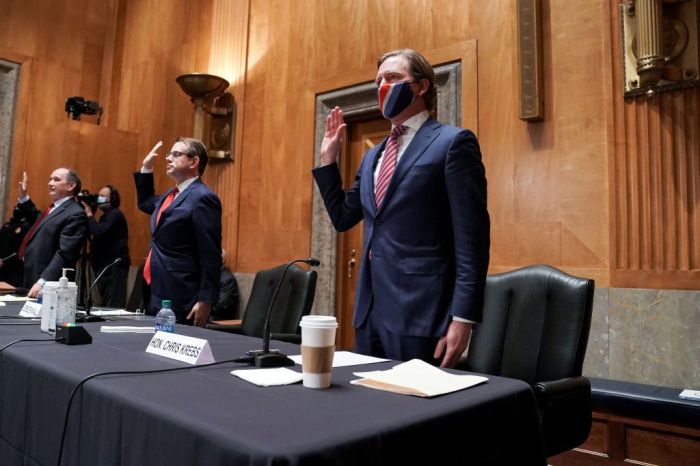
The SolarWinds hack, a significant cybersecurity incident that impacted numerous organizations worldwide, has also been accompanied by allegations of fraud. These allegations revolve around the potential manipulation of SolarWinds Orion, a widely used network management software, to facilitate the intrusion.
The Allegations of Fraud
The allegations of fraud surrounding the SolarWinds hack center around the insertion of malicious code into updates for SolarWinds Orion. This code, known as Sunburst, was allegedly introduced into the software supply chain, allowing attackers to gain access to the systems of organizations using Orion.
The allegations suggest that the attackers may have used sophisticated techniques to bypass security measures and insert the malicious code into legitimate updates. This manipulation allowed them to distribute the compromised software to a large number of victims, potentially compromising their networks and data.
The Role of SolarWinds Executives, Sec solarwinds charge fraud
The allegations also involve the potential involvement of SolarWinds executives in the incident. While the company has denied any wrongdoing, investigations are ongoing to determine the extent of their knowledge and involvement in the alleged fraud.Some key questions that investigators are seeking answers to include:
- Whether SolarWinds executives were aware of the malicious code being inserted into Orion updates.
- Whether they intentionally facilitated the insertion of the malicious code.
- Whether they took any steps to conceal the presence of the malicious code.
The answers to these questions will be crucial in determining the level of culpability of SolarWinds executives in the incident.
The SEC’s charges against SolarWinds for fraud highlight the importance of robust security measures. While it’s crucial to protect against cyberattacks, it’s equally important to track website traffic and user behavior to identify potential vulnerabilities. Setting up Google Analytics 4 setup google analytics 4 can provide valuable insights into website activity, allowing businesses to proactively address potential security risks and ensure data integrity, a key concern in the wake of the SolarWinds hack.
Potential Motivations for the Alleged Fraud
The potential motivations behind the alleged fraud remain under investigation. However, some possible motives have been suggested, including:
- Financial gain: The attackers may have sought to gain access to sensitive data or financial assets belonging to the victims.
- Espionage: The attackers may have been motivated by intelligence gathering, seeking to access confidential information or compromise critical infrastructure.
- Disruption: The attackers may have aimed to disrupt the operations of targeted organizations or cause widespread chaos and instability.
The true motives behind the SolarWinds hack may be complex and involve a combination of these factors.
The Legal Proceedings
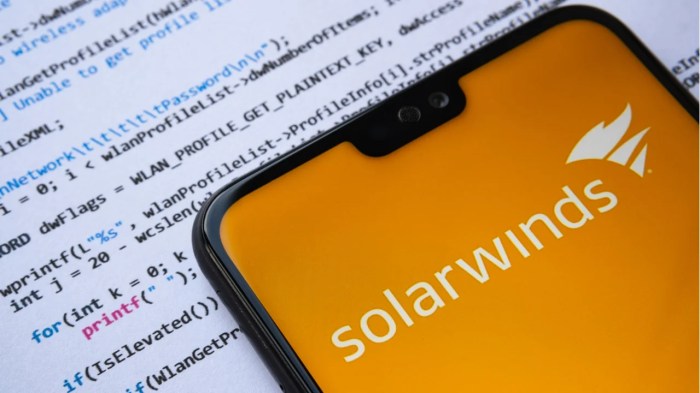
The SolarWinds hack, a major cybersecurity incident, led to a series of legal proceedings, both civil and criminal, aimed at holding those responsible accountable. These legal actions sought to address the financial losses incurred by victims, deter future attacks, and establish legal precedents for cybersecurity breaches of this magnitude.
Criminal Charges
The U.S. Department of Justice (DOJ) brought criminal charges against several individuals and entities allegedly involved in the SolarWinds hack. These charges were primarily focused on the hacking group known as Cozy Bear, attributed to the Russian Foreign Intelligence Service (SVR).The DOJ indicted four Russian nationals, Evgeny Nikulin, Yuriy Sergeyev, Artemy Votinov, and Mikhail Gavrilov, for their alleged roles in the hack.
The indictment accused them of various offenses, including:
- Conspiracy to commit computer fraud and abuse
- Computer fraud and abuse
- Conspiracy to commit wire fraud
- Wire fraud
The indictment alleged that these individuals infiltrated SolarWinds’ Orion software, allowing them to gain access to the networks of numerous government and private sector organizations.In addition to the individual indictments, the DOJ also charged the Russian government with conducting a malicious cyber campaign.
The indictment alleged that the SVR used the SolarWinds hack to steal sensitive information from government agencies, including the Department of State, the Department of Homeland Security, and the Department of Energy.
Civil Litigation
Beyond criminal charges, the SolarWinds hack also triggered a wave of civil litigation. Several companies and individuals who were victims of the hack filed lawsuits against SolarWinds, alleging negligence and inadequate security measures. These lawsuits sought financial compensation for damages, including lost business opportunities, reputational harm, and the cost of remediation.One notable case involved the U.S.
Securities and Exchange Commission (SEC) filing a civil complaint against SolarWinds, alleging that the company failed to disclose its cybersecurity vulnerabilities to investors. The SEC claimed that SolarWinds’ failure to disclose these vulnerabilities violated federal securities laws.
Potential Legal Outcomes
The legal proceedings related to the SolarWinds hack have the potential to shape the landscape of cybersecurity law and regulations. The outcomes of these cases could establish legal precedents for:
- The liability of software companies for cybersecurity breaches
- The legal obligations of companies to disclose cybersecurity vulnerabilities
- The legal consequences of nation-state cyberattacks
The potential legal outcomes also have significant implications for businesses, governments, and individuals. These outcomes could lead to:
- Increased cybersecurity regulations and compliance requirements
- Higher insurance premiums for cybersecurity risks
- Greater awareness of the importance of cybersecurity best practices
The legal proceedings related to the SolarWinds hack are still ongoing, and the full impact of these cases remains to be seen. However, it is clear that these legal actions have already had a significant impact on the cybersecurity landscape, raising important questions about responsibility, accountability, and the future of cybersecurity law.
The Impact on Cybersecurity
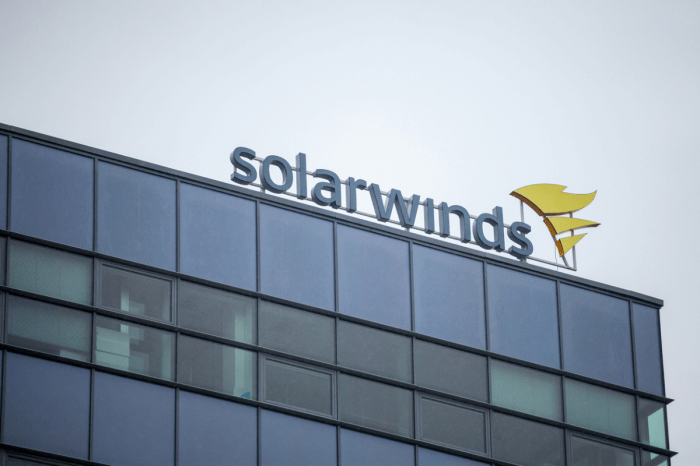
The SolarWinds hack was a significant event in the cybersecurity landscape, exposing vulnerabilities in supply chain security and raising concerns about the potential for widespread disruption. The incident highlighted the importance of robust security measures and the need for continuous vigilance against evolving cyber threats.
Lessons Learned from the SolarWinds Hack
The SolarWinds hack provided valuable lessons for organizations of all sizes, emphasizing the need for comprehensive security strategies and proactive threat mitigation.
- Supply Chain Security:The hack demonstrated the criticality of securing the entire software supply chain, from development to deployment. Organizations must prioritize securing their vendors and partners to prevent malicious actors from infiltrating their systems through third-party software.
- Zero Trust Security:The incident reinforced the importance of a zero-trust security model, which assumes that no user or device can be trusted by default. Organizations should implement strict access controls and multi-factor authentication to limit unauthorized access to sensitive data.
- Threat Intelligence and Monitoring:The hack highlighted the need for robust threat intelligence and continuous monitoring of systems and networks. Organizations should invest in tools and processes that enable them to detect and respond to suspicious activity in real time.
- Incident Response:The hack emphasized the importance of having a well-defined incident response plan. Organizations should regularly test and refine their plans to ensure they are prepared to handle security incidents effectively.
Recommendations for Mitigating Similar Threats
To mitigate similar threats in the future, organizations should consider the following recommendations:
- Software Supply Chain Security:Implement comprehensive supply chain security measures, including vendor risk assessments, code reviews, and secure software development practices.
- Zero Trust Architecture:Adopt a zero-trust security model, requiring strong authentication and authorization for all users and devices.
- Threat Intelligence and Monitoring:Invest in threat intelligence platforms and security monitoring tools to detect and respond to suspicious activity.
- Regular Security Audits:Conduct regular security audits to identify and address vulnerabilities.
- Employee Security Awareness:Provide employees with regular security awareness training to educate them about common cyber threats and best practices for protecting sensitive data.


